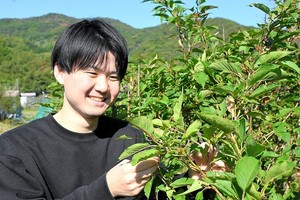THE ASAHI SHIMBUN
July 7, 2021 at 18:58 JST
Shizuoka Vice Governor Takashi Namba on July 7 called the construction methods used for a landfill that collapsed high up in a mountain in Atami "inappropriate."
The landfill gave way in a deadly landslide in the seaside city in Shizuoka Prefecture.
At a news conference, Namba also revealed that the prefectural and city governments had given corrective instructions to the business operator in the development of the land, including a massive mound of soil at the site.
According to the prefecture, the landfill was used for development at the top of the valley that collapsed. Based on post-2010 survey data from the land ministry and other data, prefectural officials have estimated that the roughly 54,000 cubic-meter mound was added as part of development in the area.
Some 100,000 cubic meters of soil and dirt, including the landfill, might have collapsed and surged to the sea on July 3 due to heavy rain, officials said. The landslide damaged or destroyed a total of 122 houses and killed at least seven people, with 27 others still missing.
Land minister Kazuyoshi Akaba addressed the issue of the collapsed mound and massive landslide in Atami at a news conference on July 6.
"We are concerned over the issue, and we have to consider inspecting all mounds across Japan jointly with other related ministries,” Akaba said.
The land ministry will consider specifically how the inspections of those mounds will be conducted.
The development of mountains and forests is managed by multiple ministries, so the land ministry will decide specific measures in cooperation with the agricultural ministry, the Environment Ministry and other governmental agencies.
Land developed with huge mounds for housing sites, subject to supervision by the land ministry, was confirmed at about 51,000 sites in 999 municipalities across Japan as of the end of March.
The mound area in the valley above Atami was not designated for a housing site, so it was not targeted for inspection.
“We need to deal with this issue firmly,” Akaba said. “We have to find out whether there are any other dangerous mound areas that could potentially cause another disaster.”




















A peek through the music industry’s curtain at the producers who harnessed social media to help their idols go global.
A series based on diplomatic documents declassified by Japan’s Foreign Ministry
Here is a collection of first-hand accounts by “hibakusha” atomic bomb survivors.
Cooking experts, chefs and others involved in the field of food introduce their special recipes intertwined with their paths in life.
A series about Japanese-Americans and their memories of World War II